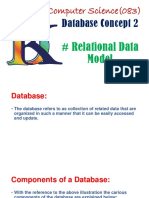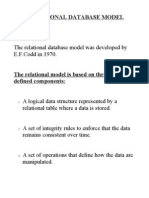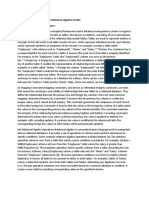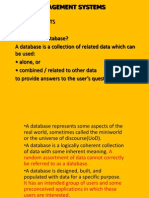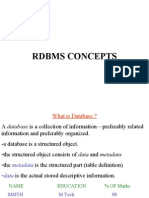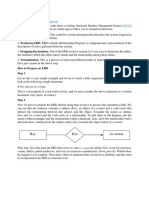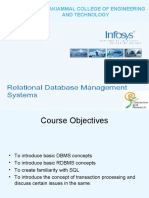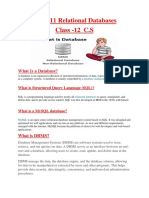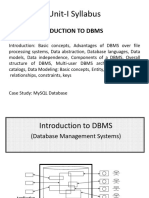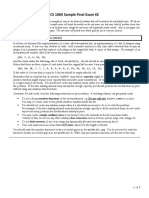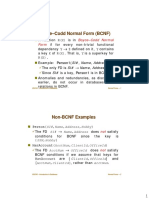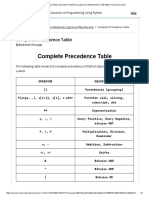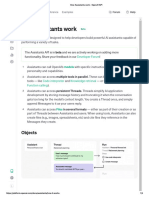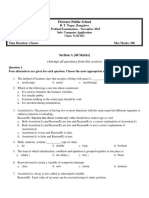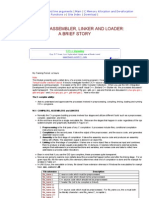0% found this document useful (0 votes)
119 views8 pagesRdbms 3
The document discusses relational database management systems (RDBMS). An RDBMS uses tables to store data with rows and columns. Relationships between tables like one-to-many, many-to-one, and many-to-many are represented using primary keys, foreign keys, and linking tables. The document provides examples of how employee, department, and project data can be structured in tables and linked to represent different relationship types in a relational database.
Uploaded by
sasaddaCopyright
© © All Rights Reserved
We take content rights seriously. If you suspect this is your content, claim it here.
Available Formats
Download as PDF, TXT or read online on Scribd
0% found this document useful (0 votes)
119 views8 pagesRdbms 3
The document discusses relational database management systems (RDBMS). An RDBMS uses tables to store data with rows and columns. Relationships between tables like one-to-many, many-to-one, and many-to-many are represented using primary keys, foreign keys, and linking tables. The document provides examples of how employee, department, and project data can be structured in tables and linked to represent different relationship types in a relational database.
Uploaded by
sasaddaCopyright
© © All Rights Reserved
We take content rights seriously. If you suspect this is your content, claim it here.
Available Formats
Download as PDF, TXT or read online on Scribd
/ 8












